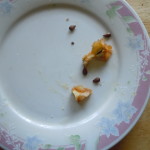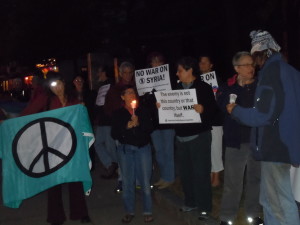In Part 1, I looked at my own history as a bicultural who is at home in my native New York City as well as in the farm village of 200 people where I live now. Part 2 looked at the context of going no-impact in present-day NYC, and how in some ways it’s easier now, and outlined Colin Beavan’s choices in attempting to live a year with no net negative impact on the environment.
In this final part, I close the circle and direct my bicultural lens on Colin’s choices.
First, I have enormous respect for what he and his wife did. They telescoped into a matter of weeks lifestyle choices that took us decades to evolve, and with considerable personal sacrifice. No movies, no eating out, no curling up with a great book long after the lights are out.
Second, I understand why they took it to the extreme they did. Their lives were so far out of balance that it took radical surgery to set it right, and it was clear at the end of the movie that as the cycle ended, they would reintroduce some of those comforts, starting with electricity.
But I don’t go quite that far. I’ve always had a goal of low negative environmental impact, rather than no environmental impact.
When I lived in Northampton, I walked or biked constantly—but I could get to town in three minutes by bike, or eight on foot. Now, I live in a place that is not served by public transit. And while I’ve been biking more frequently to Amherst or Northampton, I don’t always have the two hours to bike round-trip, versus 30 to 40 minutes by car.
On the other hand, I eat very locally. In the summer and fall, about 75% of our diet is hyperlocal, either from our own garden or from the CSA farm three miles away (and yes, we often pick up our veggies by bike). Another big chunk comes from local farmers markets eight miles away, whose vendors are mostly within 20 miles. But that still leaves us eating plenty of stuff that doesn’t grow around here.
And I’ve had a consciousness about local food for 30 years—something that’s very common here in the Valley even among the most mainstream people. Living here, I see the cycles of food in a way that’s difficult to experience in New York City.
I live in a single family home that could be better insulated, and now that the kids are grown, it’s a lot of space for two people. Certainly more than we absolutely need.
On the other hand, we’ve added solar hot water and photovoltaic, and the house, built in 1743, long ago amortized the carbon footprint of its construction.
Colin chose to give up toilet paper in favor of rewashable cloth, because he didn’t want to be responsible for cutting down trees. I am not sure that’s actually the most eco-friendly option. First of all, toilet paper NOT made from virgin wood is widely available. In New York City, at least four brands of recycled toilet paper are easily available, including Marcal, which actually uses New York City’s junk mail to manufacture its paper goods, and has for 63 years. So using that solution actually reduces landfill impact. And second, in order to avoid a BIG problem with germs, the water to wash those cloths has to be really, really hot. And hot water, unless it’s solar-heated, is an emormous draw-down of energy and user of fossil fuels.
If were to be eco-purist, I could find 100 little inconsistencies to carp about—but that’s not the point. The point is that this experiment transformed Colin and Michelle’s lives, and actually had a large impact on the way people think—particularly people in large cities.
And what do YOU think? Please leave your comment below.






